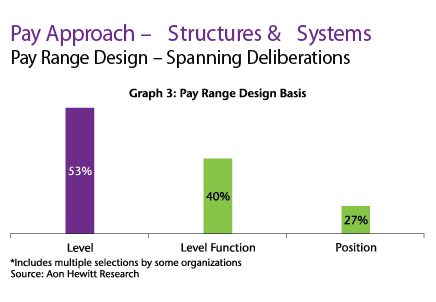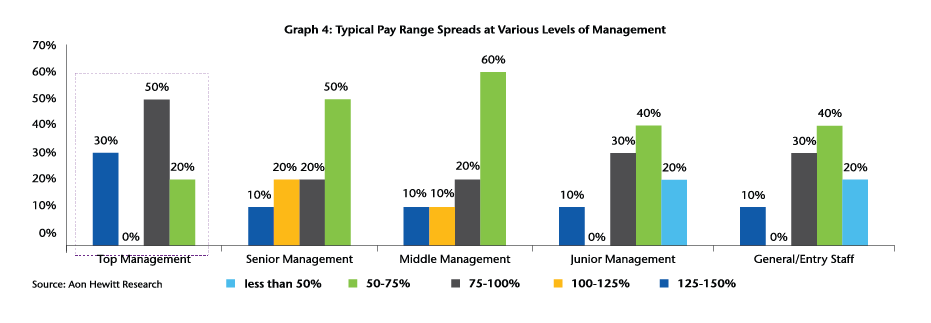FMCG Sector: Steady, Stable and Spot-on
linked to performance/potential, but also peg these
employees higher vs. market. Hence, critical employees
and high potentials may get a dual benefit.
Functional Differentiation: 20% organizations identified
specific core functions (such as sales, marketing and
R&D) which are, by default, pegged differently from
the rest of the organizations. These identified functions
give the organizations their competitive advantage.
Pay Approach - Structures & Systems

Conventional wisdom dictates that pay ranges are
typically level-based as this makes it easier to align pay
ranges with internal grades and career progression.
However, only 53% of the organizations surveyed
have level-based pay ranges which are uniform across
functions. The prevalence of a function-dependent
pay range is as high as 40%. This is seen mostly in
organizations which have premiums associated with
certain functional clusters. It is instrumental to drive
different pay philosophies for these clusters as it can
become difficult to accommodate the functional
premiums in a common level range; the ranges
might become simply too wide for comfort.
As expected, in 70% organizations, the pay range
widens at senior levels of management. This is generally
on account of average time for promotion being higher
at these levels.
For top management (function heads and
management council members), a dichotomy is
observed:
30% organizations have a wide range (125-150%)
20% have a narrow range (52-70%)
This highlights contrasting approaches towards
internal parity at senior and top management. In the
latter, all members of the top management team are
remunerated similarly while the former allows for
drastically different salaries to be accommodated.
Pay Range Fitment - Handling Promotions,
New Hires and Anomalies
Pay range fitment questions typically arise from three
sources:
1. Where do internal promotes enter the pay range?
2. Where should lateral hires be placed?
3. How should "red dots" (employees whose present
salary is higher than the range maximum) be handled?

Only 53% of the organizations
surveyed have level-based
pay ranges which are
uniform across functions.
The prevalence of a
function-dependent pay
range is as high as 40%
|